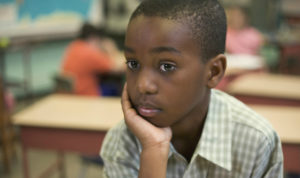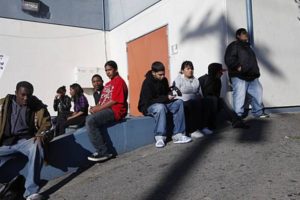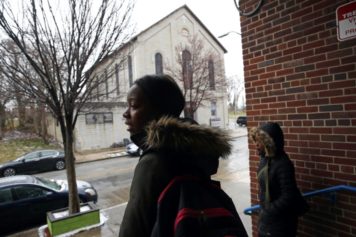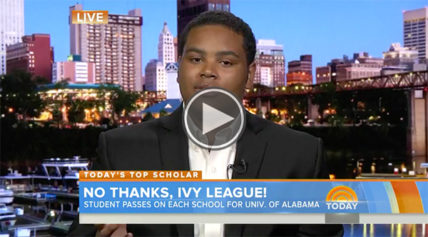
According to the U.S. Department of Education and as noted in the 2012 State of Black America report, each year 1.3 million African-American students drop out of high school. Of the remaining Black students, only 50 percent will graduate on time, if at all. Black students likewise tend to perform less well than their white counterparts in terms of standardized test scores, course grades and college readiness, even when socio-economic class differences are taken into account. Compared to their peers from any other racial and ethnic background, African-American students are also more likely to be subjected to harsh forms of school discipline, including expulsion and suspension, and to be designated as learning disabled and placed in special education and other low-status curricular programs and learning tracks.
At the same time, census data from 1980, 1990, and 2000 confirms that most residents of large urban areas across the U.S. are African-American and Latino. Nearly three-fourths of African-American and Latino students in the U.S. attend under-resourced, under-performing, distressed inner-city public schools in which 99 to 100 percent of the student populations served are identified as racial minority and living in poverty. City schools in high-poverty areas, importantly, typically graduate less than half of their students as compared to the 70 percent national graduation rate.
Evidence points to crisis in urban schools. Surely the much-strident grieving and lamentation over urban education are warranted given the abysmal conditions in city schools and the education of Black learners and other students of color. Yet, let us take a closer look at this public monument of urgent, deeply heartfelt concern pledged to city schools. Is it not possible that much of this lamenting and grieving over city schools hides far seamier realities about contemporary white America and Black education?

Like the tea and sympathy described by author Lerone Bennett Jr., this grieving and lamentation is the great white Goliath of guilt that arises from the innocents who speak from the shadows of safety, comfort, and status far removed from the lived daily and schooling realities of race-based hyper-segregation, disinvestment, and dispossession that characterize too many so-called ghetto neighborhoods and inner city schools.
As writer and social critic James Baldwin would surely agree, it takes no great imagination or high level of intelligence to comprehend that this innocent nation set Black learners down in schools we might call ghetto with no intention for these students to aspire to academic or any kind of excellence and with brutal clarity has spelled out the worth of Black children and youth to society. Long neglected then abandoned with white flight of resources from cities, market choices of vouchers, charters, magnets, and more, inner city schools were never intended to provide anything more discount schooling for Blacks and holding pens for Black bodies.
Too harsh? Perhaps there is now a chorus of outraged innocents screaming, “No! This is not true! How bitter you are!”—as Baldwin was often told.
Living in the cities of destruction, as sociologist E. Franklin Frazier called them, African-Americans face concentrated educational, economic, housing, political and other social disadvantages. As a group, more specifically, Blacks experience significantly more hyper-segregation than any other racial or ethnic group in the U.S., including Latinos who trail close behind. Blacks therefore remain highly isolated from the economic mainstream of middle-class jobs with living wages and continue to have severely limited access to quality or even adequate health care and other social services found in non-urban communities because of the impoverished state of many city governments. Schools reflect the communities they serve.
Rather than failures, city schools are system successes – successful at justifying and making seem natural and normal the suffering and inequities facing Black learners in classrooms.
Grieving and lamentation, in turn, allow for the innocents to sincerely call for something to be done about city schools and communities—as long as it doesn’t involve the pain of those children in their schools or cost any money or in any other way threaten, undermine, or usurp the shared advantages and dominance of whites. Much analysis of unending deficiencies in urban education, students, and communities provides the impetus for the organization of committees, programs, dialogue groups, and other outlets of grief for innocent do-gooders aimed at working hard within the system of white dominance without unduly disturbing it.
The failures of urban education and the challenges faced by many Black students in classrooms are logical outcomes of society’s investments and lack thereof, not surprises that pop up apparently out of nowhere and cause much head scratching and hand wringing. As Dr. Martin Luther King Jr. once advised, education will have to be purchased at full price in inner cities too. To paraphrase Malcolm X, it isn’t about integration or segregation, it’s about the right to be fully human. And education is still the way.
Dr. Juárez is a professor at the University of Massachusetts. She has published on a variety of educational topics from Spanish-English dual language education to social justice and whiteness in teacher education. Dr. Juárez has also researched and written about transracial adoption and Black children in the South.
Dr. Darron Smith, an African-American Latter-day Saint and co-editor of Black and Mormon, published in 2004 by University of Illinois Press. He is also co-author of White Parents Black Children: Experiencing Transracial Adoption. Dr. Smith is an assistant professor at the University of Tennessee Health Science Center. Follow him on twitter @drdarronsmith.


